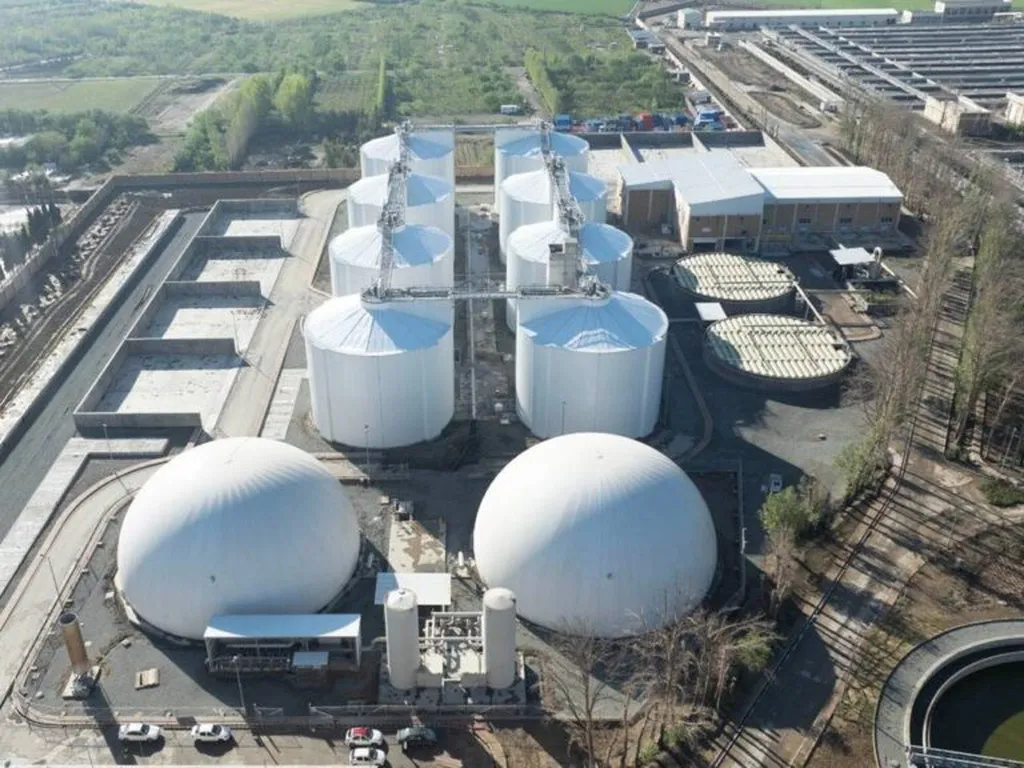In a significant stride towards sustainable energy solutions, researchers have developed an innovative biomass-driven polygeneration system that simultaneously produces electricity, cooling, and desalinated water. This integrated system, designed to overcome environmental and economic barriers, could revolutionize the energy sector by maximizing resource efficiency and minimizing waste.
The study, led by Ehsanolah Assareh from the Department of Renewable Energy Technology at the Materials and Energy Research Center in Iran, and affiliated with the Strategic Research Institute at Asia Pacific University of Technology and Innovation in Malaysia, introduces a configuration that combines a modified Brayton cycle, reverse osmosis desalination, a steam Rankine cycle, an absorption chiller, and a thermoelectric generator. This sophisticated setup recovers waste heat from biomass combustion, significantly enhancing overall efficiency.
Assareh explains, “Our proposed system is a game-changer in the realm of renewable energy. By integrating multiple technologies, we can produce not just electricity, but also freshwater and cooling, addressing several critical needs with a single, efficient system.”
The research, published in the journal ‘Energy Conversion and Management: X’ (translated as ‘Energy Conversion and Management: New Challenges and Opportunities’), employs an exergoeconomic approach to model system interactions. This method combines exergy (the useful work potential of an energy source) and economic principles to optimize performance. The team used EES software to validate their models against existing benchmarks, ensuring accuracy and reliability.
One of the most compelling aspects of this study is its bi-level multi-objective optimization framework. This approach combines a statistical optimization model with a genetic algorithm to maximize exergy efficiency while minimizing cost and CO2 emissions. The results are impressive: a peak exergy efficiency of 21.23%, a minimized cost rate of 22.28 $/h, and CO2 emissions reduced to 0.902 kg/h.
The dynamic performance of the system was evaluated across three case studies, each selected based on specific regional needs such as biomass availability, cooling demand, and desalination requirements. The findings demonstrate the system’s adaptability and effectiveness in diverse environments.
Assareh highlights, “Our dynamic simulations show that the system can generate up to 53.457 MWh/year of renewable electricity, leading to an annual CO2 emissions reduction of 10,905 tons. This is a substantial contribution to the fight against climate change.”
The exergoeconomic analysis revealed an overall exergy destruction rate of 1,180 kWh, with the modified Brayton cycle and the steam Rankine cycle identified as the most cost-intensive subsystems. In contrast, the reverse osmosis desalination unit exhibited the lowest cost contribution, underscoring the economic viability of integrating multiple technologies.
The study’s findings have significant implications for the energy sector. By optimizing the use of biomass, a renewable and widely available resource, the proposed system offers a sustainable alternative to fossil fuels. The ability to produce multiple outputs from a single system not only enhances efficiency but also reduces the overall cost of energy production.
As the world grapples with the challenges of climate change and resource depletion, innovations like this biomass-driven polygeneration system offer a beacon of hope. By maximizing the potential of renewable resources, we can move towards a more sustainable and resilient energy future.
This research not only advances our understanding of integrated energy systems but also paves the way for future developments in the field. As Assareh notes, “The potential applications of this technology are vast. From remote communities to industrial settings, this system can provide a reliable and sustainable source of energy, freshwater, and cooling.”
In the quest for cleaner and more efficient energy solutions, this study marks a significant milestone. By harnessing the power of biomass and integrating multiple technologies, we can create a more sustainable and resilient energy landscape, benefiting both the environment and the economy.

